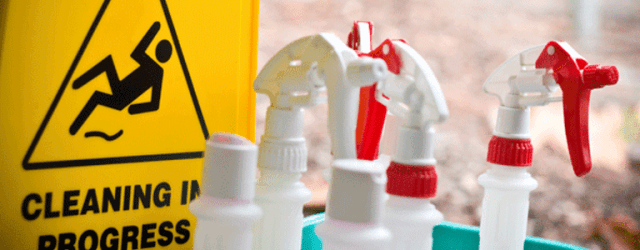No one can avoid exposure to toxic chemicals altogether, but it is possible to reduce it significantly.
How can we do this? As a first step, we should assess which cleaning products are really necessary. Next, we should also make sure to check the label on the back of the product to make sure the ingredients do not contain harmful chemicals or toxins that could potentially harm us and the environment. Make sure the ingredients of the cleaner are easily biodegradable and breakdown quickly in the wastewater treatment facilities. For this, it’s best to look for products that are 100% natural or all-natural, and certified by an independent institution like NEA, for Singapore’s case. Lastly, we tend to use more of the cleaning and or laundry products than strictly necessary, because using more product will ‘clean better’. However, this is not usually the case! We should stick to the directions of use on the label and thus this minimizes the amount of cleaning products ending up in wastewaters because the effect of cleaning will not be greater by using more cleaning liquid or laundry detergent. It is also important to check the labels of the products you use and follow the instructions to make sure you handle and store them in a safe way, also to minimise unnecessary exposure to the environment or the house.
Alternatively, we can make our own cleaning agents!
Do-It-Yourself Cleaning Agents
Worried about the potential VOCs and other chemical toxins inside store-bought domestic cleaning agents? Here are some recipes of cleaning agents you can make at home to clean safely and cheaply:
• Basic sink cleanser — Combine ½ cup baking soda with six drops essential oil (such as lavender, rosemary, lemon, lime or orange). Rinse sink well with hot water. Sprinkle combination into the sink and pour ¼ cup vinegar over top. After the fizz settles, scrub with a damp sponge or cloth. Rinse again with hot water. (From The Naturally Clean Home, by Karyn Siegel-Maier.)
• Oven cleanser — Put a heatproof dish filled with water in the oven. Turn on the heat to let the steam soften any baked-on grease. Once the oven is cool, apply a paste of equal parts salt, baking soda, and vinegar, and scrub. (From Super Natural Home, by Beth Greer.)
• Bathroom mildew remover — Good ventilation helps prevent mildew and mould. When they do occur, make a spray with 2 cups of water and 1/4 teaspoon each of tea-tree and lavender oil. Shake first and spray on trouble spots. The oils break down the mildew so there’s no need to wipe it down. (From Green Interior Design, by Lori Dennis.)
• Carpet shampoo — Mix 3 cups water, ¾ cup vegetable-based liquid soap, and 10 drops peppermint essential oil. Rub the foam into soiled areas with a damp sponge. Let dry thoroughly and then vacuum. (From The Naturally Clean Home.)
• Laundry soap — Try “soap nuts” made from the dried fruit of the Chinese soapberry tree. Available in natural groceries and online, the reusable soap nuts come in a cotton sack that goes into the washing machine with clothes.
• Dusting — Skip the furniture polishes. Instead, use a microfiber cloth. Made from synthetic fibres that are then split into hundreds of smaller microfibers, they capture dust more efficiently than regular rags. If necessary, a little olive oil makes a fine polishing agent.
All in all, we should be actively involved in our decision-making process and read all labels on cleaning supplies and household products before we buy them. Choose products that do not contain or have reduced amounts of VOCs, fragrances, irritants and flammable ingredients and try to avoid using air fresheners altogether. As a safer cleaning alternative, warm water and soap with a generous helping of lemon often will do the trick, especially at home. Baking soda is good for scrubbing. A mix of vinegar and water can clean glass. When using cleaning or household products, keep the area well ventilated by opening the windows and doors. Do note to also never use cleaning products in a small and enclosed space.





